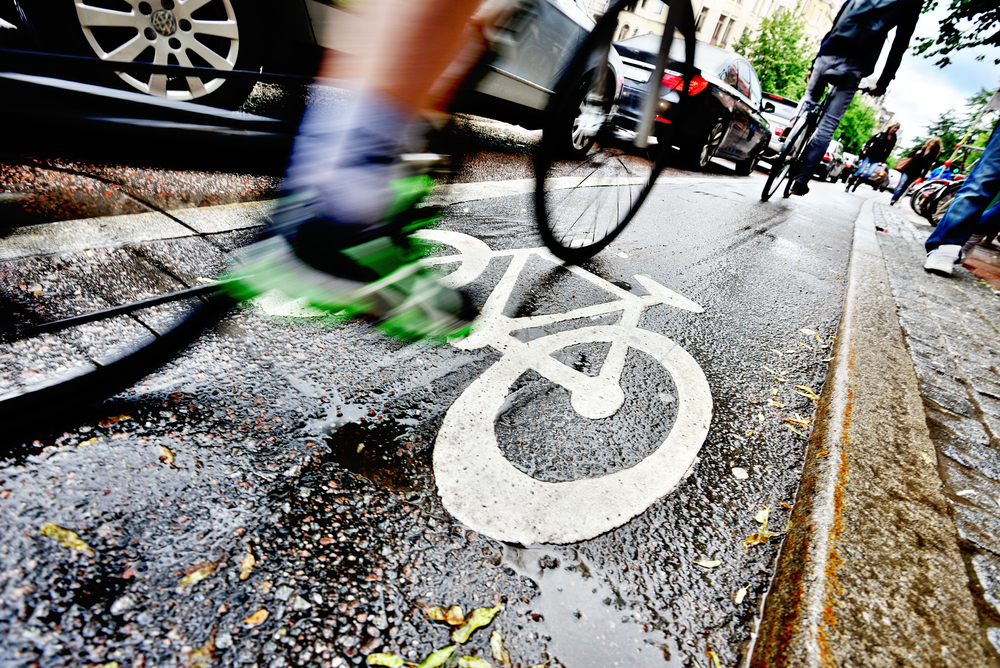Winter is here, and the conditions for cycling have changed. Most people put their bikes away until spring, but for us bike lovers, seasons don’t matter. This blog will go over how to prepare for winter cycling to make the most of the experience while maintaining safety precautions.
Rain-proof Clothing
Chilly season is here, and so is the rain. Cycling in the rain can be dangerous, however with the right safety measures taken; it can be just as enjoyable as any bike ride. If you don’t want to be cold and miserable while riding in the rain, then purchasing rain riding gear is a must. When purchasing your waterproof jacket, make sure that it’s:
- Comfortable
- Breathable
- Reflective
- Waterproof

Slow Down
Having your rain-proof clothing isn’t all there is when it comes to riding during wet conditions. It is important to be extra cautious while cycling and slow down. Slippery roads and muddy trails are easy causes for accidents. While riding on the road, pay extra attention to anything metal on the road, such as grates, manhole covers, and railroad tracks. The painted lines on the road also tend to be slippery. Don’t forget to look out for puddles. Even though they look like fun, they can hide potholes and other dangerous road irregularities.
Rim brakes don’t respond well in wet weather. So it is essential that you allow yourself twice as much time to brake than what you would do in normal weather conditions. Don’t hit the brakes too hard as it will cause you to skid. Feathering the brakes is a good technique. This means to squeeze the breaks until you feel that they start to grip. Doing this helps remove the water and dirt that keeps the brake pads from gripping to the rim.

More Bike Maintenance in the Winter
Wet roads tend to build up a lot of dirt on your brakes and chain. That means cleaning everything more often. A quick hose down after your ride is all you need to remove all of the gunk. Getting some mudguards for your front and rear wheels will help. In the winter, your chain stretches quicker than it would in summer. The extra rain mixed with salt and grit from the road works its way into your chain, removing the lube and causing the metal to wear more quickly. Check your bike to see if it’s in need of a chain replacement.
It Gets Dark Early
As it’s getting darker earlier, it is important that you wear fluorescent, reflective clothing. The darker it is, the harder it is for a motorist to notice you. Especially when there’s rain. The most dangerous mistake cyclists make is overestimating their visibility when riding. Having lights on your bike is vitally important to night riding. At a minimum, you should have flashing front and back lights on your bike. Flashing lights are significantly more visible to drivers than static lights. But even better than that are ankle lights. Studies have shown that lights that trace the movement of your feet as you peddle are the most eye-catching of all.

Biking in the winter does require a few more things to take into account compared to warm weather conditions, but it can be an amazing experience. We hope this blog helped you get an idea of how to prepare for winter cycling. Bonnici Law Group has the experience, knowledge, and reputation you want and need when injured in a bike accident. We are here to help you build the most substantial claim possible for compensation and obtain a positive outcome in your case. Do not hesitate to contact Bonnici Law Group at 858-261-5454 or help@bonnicilawgroup.com. For a free consultation, click here.

Personal Injury in West Hollywood, CA
West Hollywood, California, is a vibrant and dynamic city in the heart of Los Angeles, renowned for its artistic flair, trendy boutiques, and world-class entertainment scene.
Long-Term Disability Insurance Support in Venice, CA
Venice, CA, is a dynamic and eclectic neighborhood in Los Angeles, known for its bohemian vibe, historic canals, and artistic community.


